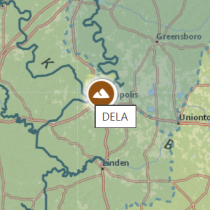NEON Completes New Prototype Site
October 25, 2010
NEON has completed civil construction of its first production-grade prototype site, located near Sterling, Colorado. The site is located in an agricultural area. Construction of the prototype site helped NEON facilities and construction staff better understand the overall site construction process, in addition to determining best practices for management and oversight policies. This prototype will also help NEON determine how we will ensure we construct a site using minimum impact construction processes and ensure we maintain the ecological integrity of a site. The prototype site will eventually serve to help NEON staff test the capabilities of a fully operational site. NEON would like to thank Mr. and Mrs. Lindstrom for allowing NEON use of and access to the Gilbert and Violet Lindstrom Farm to build a prototype site. We are grateful for their enthusiastic support of the NEON project.
